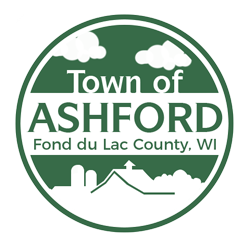Wisconsin Working Lands Initiative fights future farmland development Farmers would pay fee to rezone ag preservation land By Jon Styf • [email protected] • Money is powerful. It can change people's minds on almost anything. And for years, developers have had the upper hand when it comes to buying farmland for homes. The Wisconsin Working Lands Initiative is aimed at changing that, fighting it in a simple way, by actually collecting a fee required by law. The initiative, which went into effect on Jan. 1, includes complex development and fee formulas and zoning rules so involved that Brown County planner Aaron Schuette has traveled the county to explain the process with an ever-evolving slideshow on the intricacies. What farmers need to know is this: In order to be eligible for the statewide $7.50-per-acre tax credit, a farm must be zoned in a farmland preservation district and then inspected to ensure it meets conservation standards. If the farm is then rezoned out of a farmland preservation district, the owner has to pay a conversion fee, anywhere from $594 to $642 per acre in Brown County. And that is the catch. "A lot of people are trying to understand why, but the reality is that the Farmland Preservation Plan, even in 1985, had that fee in place," Schuette said. "It's just that the process by which the state would collect the penalty was incredibly complex. The fee was actually in place, now there is a mechanism to keep it." The fee is meant to dissuade farmers from selling off farmland for development. And, if they do sell, the fee is aimed at making them develop less of the property. But it's also a big concern for farmers who are set to retire without family to pass the farm onto. Ray Tauscher, who operates a Pittsfield dairy farm along with his two brothers, said the enforcement of the fee caught farmers by surprise. "It's an attempt to try to protect it," said Tauscher, who also is on the Pittsfield Town Board. "I think there should be more incentives involved." Tauscher's farm is 7 miles from Green Bay, and he said urban sprawl heads further his way each year. His 19-year-old son, Randy, helps with the farmwork on the weekends but also has a full-time job in case the family's 250-cow and 700-acre operation is eventually sold. While road improvements on the Wisconsin 29 connectors have helped Tauscher's farm get product to urban markets, it has also helped make Pittsfield more attractive for developers. "I hope I don't have to make that decision for another 20 years," Tauscher said about selling his land. "But if urban sprawl comes out and forces that decision, I'll have to make it. "It doesn't pay to fight for our small farm if there is development all around us." The money raised by the conversion fee, collected by the local zoning authority, goes to a fund to pay farmers willing to give up their rights to use their land for anything but farming. That program, Purchase of Agricultural Conservation Easements, is intended to give farmers the same dollar amount that the land would be worth if it was zoned commercially and sold. The state pays half of the easements while the conversion fees, federal funds and tax write-offs cover the rest. "If one farmer does it, then neighboring farmers might do that, too," Schuette said. "Then larger chunks will remain farmland forever. And the farmer can use the money for equipment, land and facilities." There are exceptions to the fee, allowing for 1 acre for a non-farm residence per 20 acres of farm, or canceling the fee if a municipality decides to rezone a property based on a comprehensive change to its development plan. But, for the most part, the rules remain firm. "What people are concerned about is that if they ever want to develop property, they don't want to pay conversion fees," said Jim Jolly, Brown County program manager. "But the state wants communities to assess what lands they want to keep in agriculture and go with that." Shawano County planner Melinda Barlow said one of the keys to avoiding the conversion fees is solid communication with local zoning authorities. Her county hasn't seen a zoning change from an exclusively agricultural district in two years. This year, they even went a step further, earning an area of Maple Grove the designation of Agricultural Enterprise Area, making those property owners eligible for a $10 per acre tax credit. "It seems like the (conversion fee) concept is scarier than the reality is," Barlow said.
